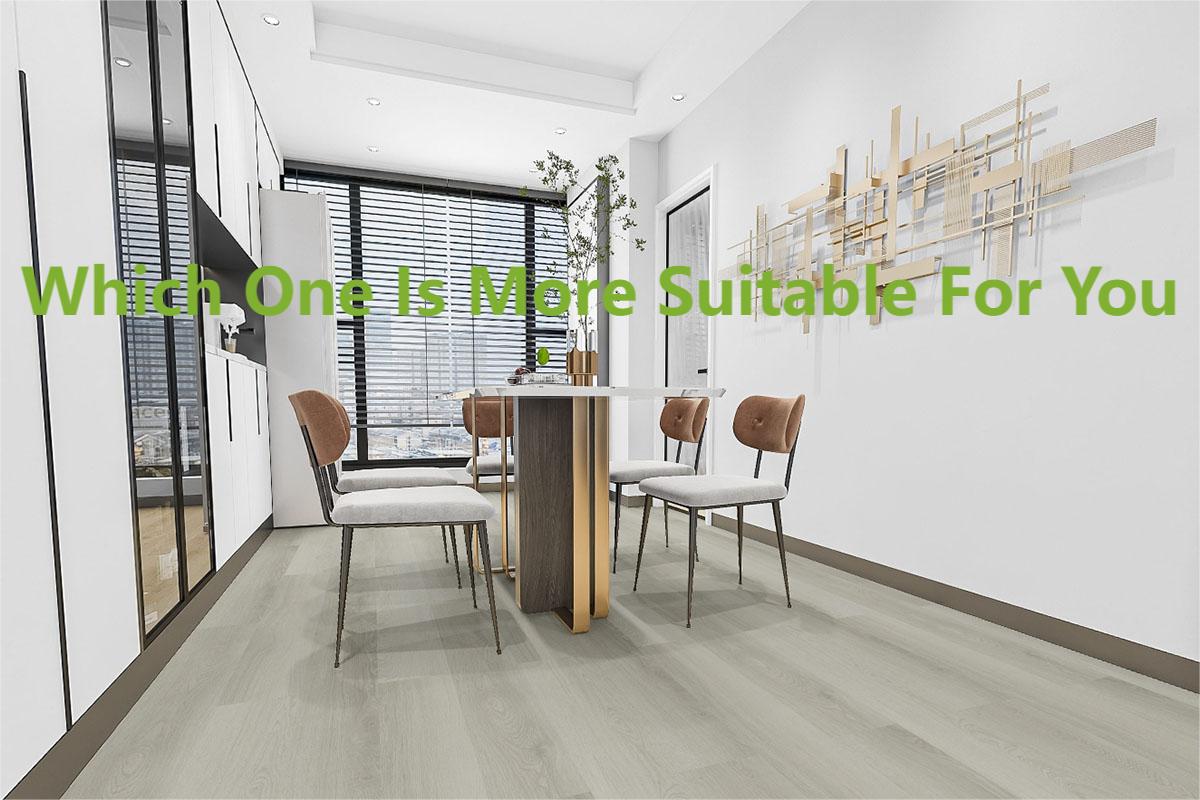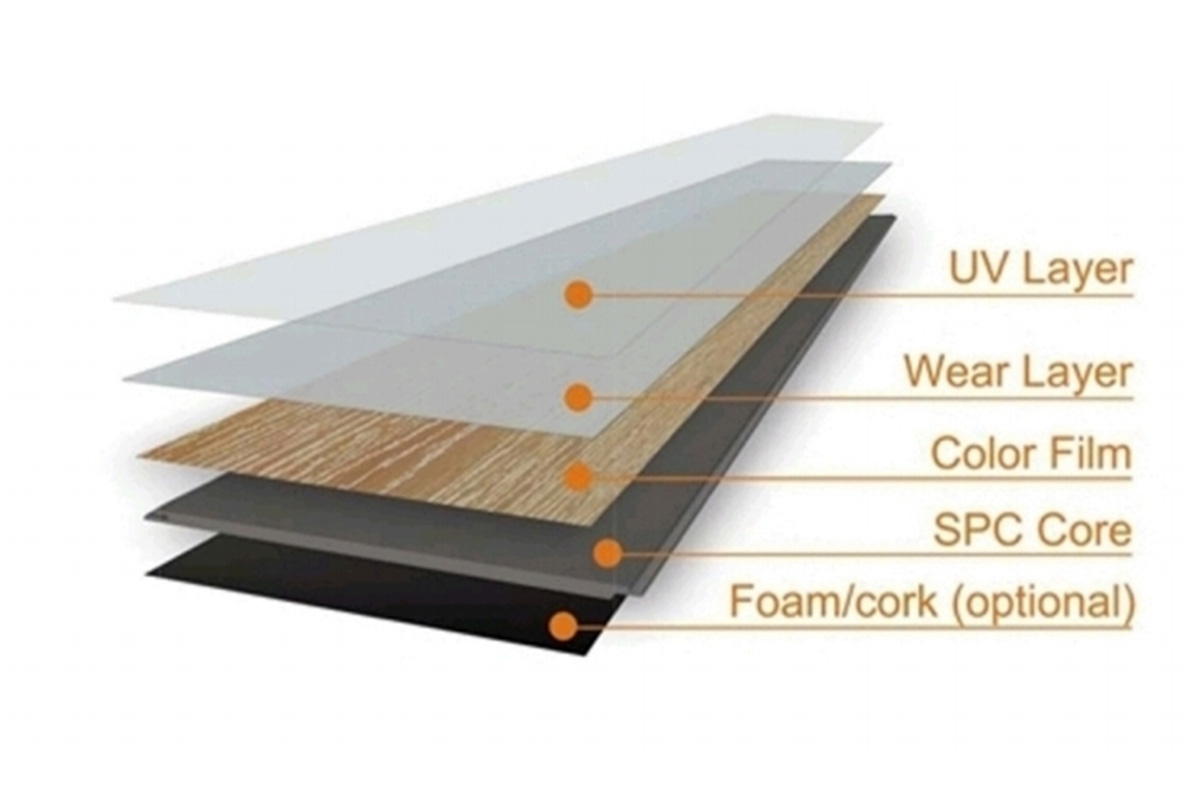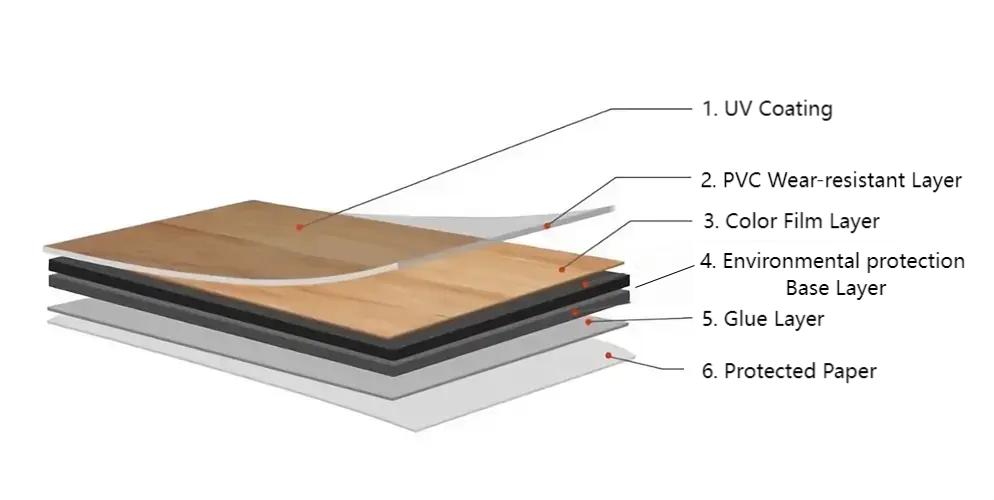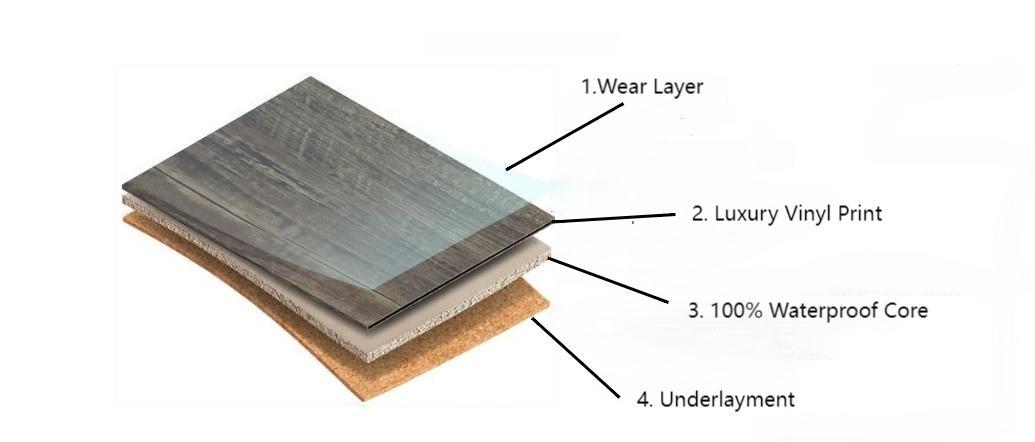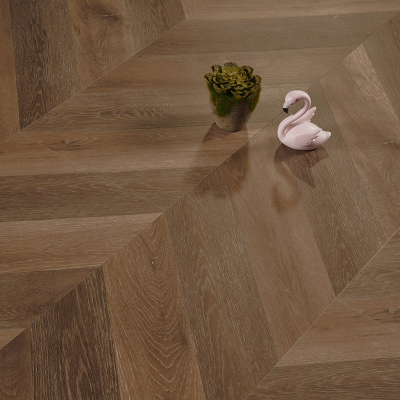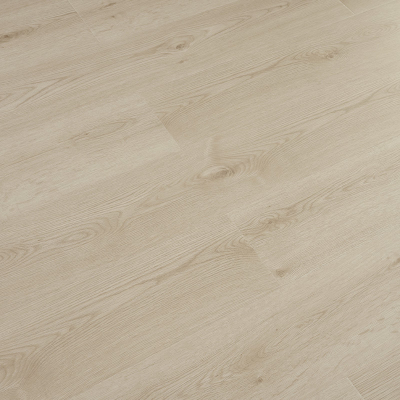SPC, PVC, WPC, LVT -Which One Is More Suitable For You
In terms of main components, SPC, PVC, WPC and LVT flooring are all variants of PVC flooring.The main material of PVC flooring is pure PVC, LVT flooring is composed of polyvinyl chloride and a small amount of stone powder, WPC flooring is composed of polyvinyl chloride and wood flour, and SPC flooring is composed of 25% polyvinyl chloride and 75% stone powder.
Selecting the right flooring material is crucial for both aesthetics and long-term performance. SPC (Stone Polymer Composite), PVC (Polyvinyl Chloride), WPC (Wood Plastic Composite), and LVT (Luxury Vinyl Tile) are among the most popular options in modern interior design. Each material has unique engineering characteristics, installation requirements, and regulatory considerations. Understanding their differences helps homeowners, architects, and commercial developers make informed decisions based on durability, water resistance, cost, and design versatility.
Technical Comparison of SPC, PVC, WPC, and LVT
| Feature | SPC (Stone Polymer Composite) | PVC (Polyvinyl Chloride) | WPC (Wood Plastic Composite) | LVT (Luxury Vinyl Tile) |
|---|---|---|---|---|
| Core Material | Limestone + PVC | Pure PVC | Wood fibers + PVC | PVC composite |
| Waterproofing | Fully waterproof | Fully waterproof | Water-resistant | Water-resistant, some fully waterproof |
| Durability | High impact resistance, rigid | Flexible but less impact-resistant | Moderate, softer underfoot | Moderate, depends on thickness |
| Thickness Range | 4–8mm | 2–5mm | 4–8mm | 2–6mm |
| Installation | Click-lock, floating | Glue-down or click | Click-lock | Glue-down or click |
| Surface Finish | Matte, textured, glossy | Smooth, embossed | Wood-like texture | Matte, glossy, embossed |
| Applications | Residential, commercial, wet areas | Residential, light commercial | Residential, low-moisture areas | Residential, light commercial |
Engineering Principles
SPC
Rigid Stone-Polymer Core: Prevents warping and swelling; excellent for high-traffic and wet areas.
Dimensional Stability: Minimal expansion (<0.1%) under temperature changes.
PVC
Flexible Polymer Layer: Lightweight, easy to handle, but less impact-resistant.
Chemical Stability: Resistant to acids and alkalis in typical household environments.
WPC
Wood Fiber Reinforcement: Enhances comfort underfoot and provides natural feel.
Edge Sealing: Water-resistant but not suitable for prolonged immersion.
LVT
Luxury Design Printing: Offers high-definition textures mimicking wood, stone, or tile.
Layered Protection: Wear layer with UV coating enhances scratch and stain resistance.
Regulatory Standards and Compliance
High-quality flooring products must comply with:
ISO 9001 / ISO 14001: Quality and environmental management.
EN 13501-1: Fire performance classification.
EN 16511 / EN 649: Standards for vinyl flooring wear resistance.
E1/E0 Emission Standards: Ensures low formaldehyde emission and indoor air safety.
Slip Resistance (DIN 51130 / EN 13893): Essential for wet areas.
Installation Considerations
Subfloor Preparation: All flooring types require a clean, level, and dry subfloor.
Floating vs. Glue-Down: SPC and WPC commonly use click-lock floating installation; PVC and LVT can be glue-down or click-lock.
Expansion Gaps: 6–10mm is recommended to accommodate temperature-induced movement.
Moisture Barriers: For concrete subfloors, a vapor barrier enhances performance.
Maintenance Recommendations
Routine Cleaning: Sweep or vacuum regularly; mop with pH-neutral cleaner.
Spill Management: Immediate wiping prevents surface stains.
Protective Pads: Recommended under furniture to reduce scratches.
Avoid Steam Cleaning: Excessive heat and moisture can damage polymer layers.
Advantages and Benefits
Choosing between SPC, PVC, WPC, and LVT depends on application, durability, and aesthetic preferences. SPC flooring provides superior waterproofing and rigid stability for high-traffic or wet areas. PVC is lightweight, flexible, and cost-effective, suitable for low-traffic spaces. WPC offers a softer, wood-like feel with moderate water resistance, ideal for bedrooms and living rooms. LVT delivers high-definition designs with good scratch resistance for decorative applications. All comply with international safety, emission, and slip-resistance standards. These options provide versatile, long-lasting flooring solutions that balance functionality, style, and sustainability across residential and commercial environments.
Frequently Asked Questions (FAQ)
Q1: Which flooring is best for bathrooms or kitchens?
SPC is the most suitable due to its rigid core and full waterproof properties.
Q2: Can WPC or LVT handle heavy commercial traffic?
WPC is generally for residential; LVT may handle light commercial traffic, but SPC is preferred for high-traffic areas.
Q3: How do installation methods differ?
SPC and WPC mostly use click-lock floating installation, while PVC and LVT can be glued down or clicked together.
Q4: Are these materials environmentally safe?
Yes, compliant products meet E1/E0 emission standards and ISO environmental certifications.
Call to Action
Selecting the right flooring material is critical for long-term performance, aesthetics, and safety. If you are evaluating SPC, PVC, WPC, or LVT, we provide expert consultation, technical guidance, and tailored solutions for both residential and commercial projects. Contact us today to determine the optimal flooring solution for your space.

